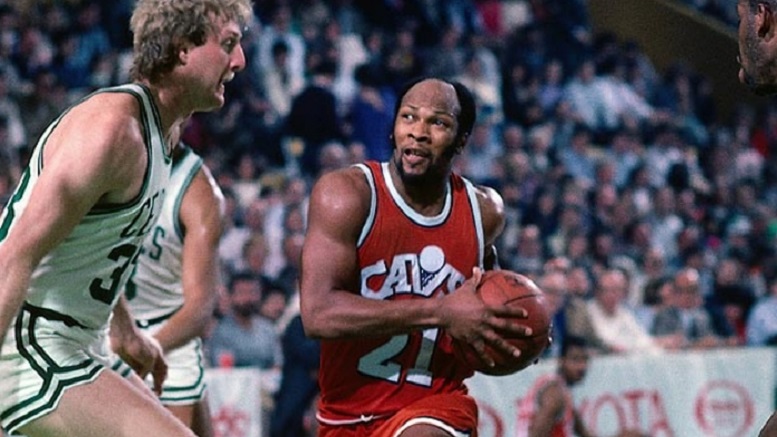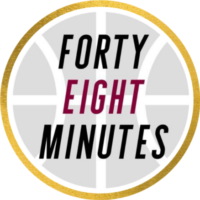In 1984-85, the Cleveland Cavaliers were headed straight for pro basketball’s sewer.
Their head coach and best player were at odds. Their starting point guard was built like the world’s largest nectarine and their backup center went by the name “Dinner Bell.” Their small forward was an excellent defender — but hardly anyone knew it.
Through the first two months of the season, the Cavs’ record stood at 2-19. Two wins. Nineteen losses.
This was the product to which fans were being treated. It wasn’t supposed to be this way, either. Or at least not this bad.
The Cavs had undergone an ownership change, with George and Gordon Gund rescuing the franchise from the claws and craziness of Ted Stepien in 1983. The Gund brothers then hired Harry Weltman, who seemed like a competent general manager. Weltman brought in a young, fiery coach in George Karl, who took the job at the age of 33 after slogging his way through the minor leagues.
And the star player was a man who went by the name of World B. Free. That wasn’t a nickname — it was his actual name after Lloyd Free had it legally changed.
“I’m still the same guy I was when I was Lloyd, though,” Free promised after the name change in 1981. “I’ll say what I’m going to do, and then I’ll go out and do it.”
That was true. Free idolized flamboyant boxer Muhammad Ali, mimicking Ali’s penchant for talking a big game then going out and trying to deliver. For Free, this strategy didn’t always work. He butted heads with coaches. He lost in the court of public opinion. He was viewed as a loudmouth and a loser, a guy who shot a lot, scored quite a bit, and didn’t win.
Free stood 6-foot-2, which was considerably undersized for a shooting guard, even in those days. He was bald on top. He shot the ball by flinging it from behind his head, then almost straight up into the air — resulting in one of the most awkward and high-arcing jumpers in NBA history.
Free was 30 years old (just a few years younger than his coach) at the start of the 1984-85 season. Despite a career scoring average of around 24 points per game, Free had worn out his welcome in several prior stops, from Philadelphia to San Diego to Golden State. He was viewed as selfish, uncoachable.
But the Cavs needed scoring and knew they could land Free for next-to-nothing in 1983. To Weltman and the Gunds, Free’s colorful quotes and glitzy game could put fannies in the seats. Nobody really expected him to help the Cavs win.
Rest of the bunch
Free’s starting partner in the backcourt, John Bagley, was considerably calmer (and pudgier). Bagley was a fun-loving fellow himself, often pulling over his car in the suburbs for a spontaneous run with kids on outdoor courts near the Cavs’ arena in Richfield.
Free and Bagley were joined by small forward Phil Hubbard, a pro’s pro and someone who was willing to constantly defend and only shoot when absolutely necessary. Given the fact he shared court time with the always-firing Free, the unselfishness of Hubbard and Bagley was a must.
Roy Hinson was the power forward, a second-year player with great athleticism and skills near the basket. He could dunk, block shots, collect rebounds and was averaging an underrated 16 points a game.
The starting center was Mark West, a bring-your-lunch-pail-to-work type of defender. West was a free agent and largely unwanted until the Cavs signed him in late November.
Off the bench came rugged power forward Lonnie Shelton, who was once mugged from behind. But instead of the perpetrator getting Shelton’s wallet, he received a Shelton punch, followed by a Shelton pin to the ground, followed by Shelton sitting on the failed robber until police arrived.
Joining Shelton in reserve were the likes of ultra-athletic (and fairly zany) big man Edgar Jones, steady point guard Johnny Davis, hustling power forward/center “Gentle” Ben Poquette and rotund rookie center “Dinner Bel” Mel Turpin.
Not a terrible team, but hardly the things of which basketball dreams were made.
Playoffs? Playoffs?
After the 2-19 start, nothing overly dramatic changed for the Cavs. Weltman didn’t make a significant trade. No high-profile free agents came to rescue the team. Karl didn’t change his game plan.
Something just started to click. Karl and Free, after spending the first two months doubting each other, began to see eye-to-eye. They didn’t always like the other guy, but as the season went on, they developed a mutual respect.
Hinson and Hubbard began to play off the others, collecting Free’s misses and running the floor for easy baskets. Bagley stayed within himself, driving, dishing and almost always finding ways to find the open man. Shelton returned to the role of rugged enforcer that helped the Seattle SuperSonics win a championship six years earlier.
The Cavs hustled their way to 34 wins in the final 61 games. That was good enough for fourth place in the Central Division and the No. 8 and final seed in the playoffs. The reward? A first-round matchup with the defending champions.
Larry and the Celtics
The Boston Celtics were expected to make quick work of the Cavs. They defeated the Los Angeles Lakers for the title the previous season, and featured a starting lineup that consisted of Larry Bird, Robert Parish, Dennis Johnson, Kevin McHale and Danny Ainge.
The Celtics were remarkably talented, cocky and had been down this road plenty of times. The Cavs, on the other hand, were supposedly just happy to be here.
But the Cavs battled in Game 1 in Boston, with the Celtics being forced to fight every minute of a 126-123 win. The experts brushed it off to Boston overlooking its opponent — although Bird (who scored 40 points) admitted Hubbard make him work as much as anyone had all season. Free, on the other hand, went just 8-of-21 shooting.
In Game 2, the Cavs proved they were no fluke. Karl got the most out of his men again, the Cavs overcoming another poor shooting night from Free (9-of-22) to stay with it until the bitter end — a 108-106 Celtics win in Boston.
The first round was played in a best-of-five format, as opposed to the best-of-seven of today. So the Cavs were set to return home, losing the first two games by just a combined five points. They were a mere game from elimination nonetheless.
They caught a break, however, when Bird was held out of Game 3 with bone chips in his right (shooting) elbow.
More than that, Free recaptured his form at The Coliseum in Richfield, firing in 32 points and almost single-handedly lifting the Cavs to a 105-98 victory. Of course, all the talk from outside the locker room centered on the fact Bird didn’t play. Karl and the Cavs didn’t care.
“I said to the players after the game, ‘Be proud about tonight,’” Karl told reporters. “Don’t let Larry Bird not playing take away from what we did. That team probably wins 55 (regular-season) games without Larry Bird, instead of 63 with him.”
FINAL ACT
Toward the end of Game 3, the confident Cavs crowd chanted, “We want Bird!” That, of course, led to a smirk from Bird himself. “They want me, they got me,” he said, before returning for Game 4.
Not surprisingly, Bird delivered. The game was back and forth throughout, featuring an abundance of ties and lead changes. Then came the fourth quarter, when Bird displayed the experience of champion in nailing seven of eight free throws.
His final two came with 23 seconds left, giving the Celtics a 117-115 lead. True to Bird form, he pointed to Cleveland fans in taunting fashion after hitting the second.
Still, the Cavs had a chance to send the game to overtime and even had a couple shots to win. Actually, they had three chances to win. But Bagley missed badly on a 3-pointer, and West failed on a putback. Still, somehow, the ball ended up in Free’s hands as time was about to run out. It looked as if Free had a wide-open look at another three. He set, he pulled the ball behind his head, he let it fly. And Dennis Johnson came out of nowhere to block it. Johnson then gathered the ball and held onto it as time — and the Cavs’ season — expired.
Final combined score of the series: Celtics 449, Cavaliers 449. But final record of the series went to the Celtics, 3 games to 1.
These Cavs were never quite the same after 1984-85. Karl got fired before the end of the following season. Free wasn’t invited back in 1986. Hinson was traded for the No. 1 draft pick that was used to take Brad Daugherty. Mark Price, Larry Nance, Ron Harper, Coach Lenny Wilkens and others quickly replaced the 1985 team and formed a legacy of their own.
But in 1984-85, the Cavs gave their fans a team to always remember. For a team that won just two of its first 21 games, that’s really saying something.












